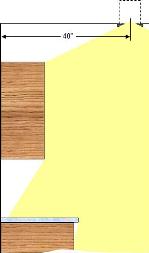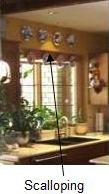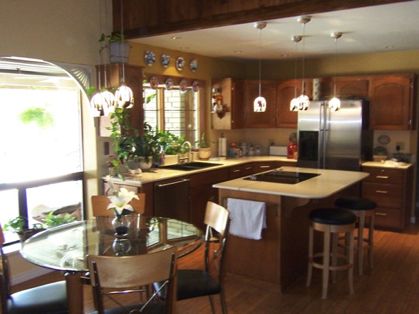Many homeowners choose their kitchen lighting for aesthetic value only. This is a tremendous mistake, as most kitchens are not created to be showplaces (this does not mean that one cannot be proud of their kitchen design), they are workplaces as well as a comfort zone, they are the center of many family lifestyles.
Proper kitchen lighting provides ease of doing the cooking tasks, such as chopping, cutting and cooking while not being so intensively bright to create eye strain. Eating and gathering areas within the kitchen should be lit, but in softer lighting than in the work areas.
Hence, there are three types of lighting that may be required or used in any specific kitchen design or layout in order to obtain the correct illumination:
- Area Lighting
- Task Lighting
Area lighting provides the overall room's illumination. The exact location, quantity of light fixtures and bulbs has to be based on the layout of the kitchen, however it can be said that more light fixtures are better than one light fixture, as the more light fixtures, the less the shadowing effect in parts of the kitchen. Although one can use brighter bulbs for more illumination, as a general statement two 50 watt bulbs in separate fixtures will provide better better lighting than one 100 watt light bulb.
The area lighting should be designed to provide sufficient illumination into the back of all of the kitchen cabinets without eye strain.
A popular, but not overly efficient light fixture in kitchens are recessed light fixtures. The recessed light fixture does not allow a lot of light to bounce off the ceiling due to its inherent "recessed" design. If you want to use recessed light fixtures make sure that they are a minimum of 40 inches away from the kitchen cabinet wall, based on a standard kitchen wall cabinet depth of 12 inches, as shown in Figure 1.

Figure 1 - Positioning recessed light fixtures in kitchen ceiling
If they are placed less than 40 inches from the back wall, you will most likely have a scallop lighting effect on the front of the cabinets and walls (Figure 2), (the intensity of scalloping can also be controlled by the type of bulb, color and style of trim used). As well, you will have shadows on the countertops below the kitchen wall cabinets.

Figure 2 - Scalloping caused by recessed light fixture
The illumination in a kitchen is also affected by window placement, even at night, colors within the confines of the kitchen - the lighter the color and the higher the gloss factor of the walls, ceiling, countertops, floor and cabinets - the less illumination you will need from light fixtures.
As the name implies, task lighting is used to illuminate specific areas where tasks are being accomplished. In a kitchen task lighting would be used over cooktops or stovetops, countertop workplaces and kitchen sinks. Some kitchen areas have telephone tables, which may also need task lighting in order to take and make notes during phone conversations.
Consider that task lighting should have the ability to be turned "ON" when the task is being performed and "OFF" when the task is completed.
Kitchen tables or countertop areas, see Figure 3, used for eating can be considered task areas and may be served by task lighting fixtures such as pendant lights (Figure 4). Pendant lights provide direct and specific area illumination and are available to match any kitchen decor.

Figure 3 - Pendant lighting used as task lighting to illuminate the kitchen table and island countertop

Figure 4 - Pendant light fixture
In a smaller kitchen task lighting can take the form of area lighting with the combined installation of a dimmer switch (Figure 5). During normal kitchen operation the area lighting dimmer is in a low position. When a task is to be performed the dimmer is turned to a higher setting, thus providing additional illumination to perform the task.

